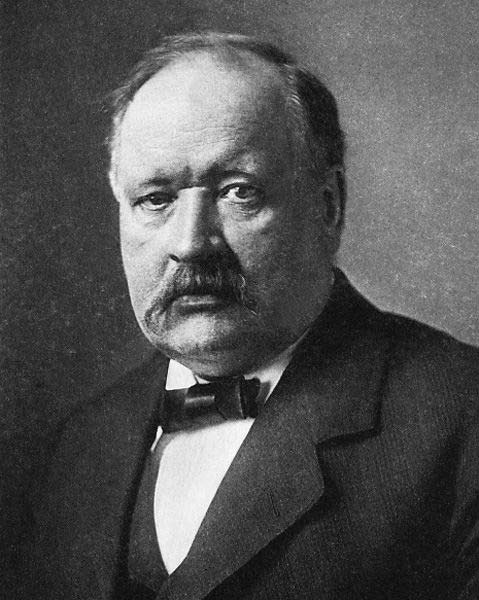| Svante Arrhenius | |
|---|---|
 |
|
| Scientist | |
| Specialty | Physics, chemistry |
| Born | Feb. 19, 1859 Wik Castle, Sweden |
| Died | Oct. 2, 1927 (at age 68) Stockholm, Sweden |
| Nationality | Swedish |
Svante Arrhenius was a Swedish chemist and physicist. He is considered to have been one of the pioneers of physical chemistry. Arrhenius was awarded the Nobel Prize for Chemistry and later worked at the Nobel Institute itself. He also played a crucial role in the scientific community’s increasing understanding of immunology. Arrhenius has a crater on the Moon named in his honor, as well as a number of scientific institutions and laboratories.
Early Years
Arrhenius was born in a village near Uppsala on February 19, 1859. He was a child prodigy, teaching himself to read at the age of three; he also learned arithmetic from the account books kept by his father, who was a surveyor. When he was eight, the boy began formal education at the Uppsala Cathedral School and graduated younger than any of his classmates in 1876.
Education and Early Career
He had proved himself exceptional at both mathematics and physics. Arrhenius then enrolled at the city’s university, graduating with a bachelor’s degree two years later and going on to gain a doctorate in 1884.
That same year, the institution awarded him the title of honorary docent, while the Royal Swedish Academy of Sciences granted him funds for travel in 1886. This let him continue his education by spending time in laboratories at the Universities of first Riga and then Leipzig. He also gained temporary positions at several other institutions in both Germany and Austria.
During the late 1880s, he also spent time at the Institute of Physics in Stockholm, where he worked on the still new field of physical chemistry. In 1887, he theorized that electrolytes were dissociated even when their solution had no current flowing through it.
The Greenhouse Effect
In 1889, Arrhenius came up with what became known as the Arrhenius equation, which shows the relation between temperature and rate constants in chemical reactions. Moving into the 1890s, he used the term “cosmic physics” to describe the work he did with others at Stockholm’s Physics Society to produce theoretical physics which would allow natural phenomena on land, at sea, and in the air to be linked.
One subject which prompted debate within the society was the reason for the onset of ice ages. In 1896, Arrhenius devised a climatic model which showed the influence of increasing levels of atmospheric carbon dioxide, a phenomenon known as the greenhouse effect.
In 1907, Arrhenius published his book entitled Immunochemistry, which gave its name to another emerging branch of the science. The majority of his work in the field consisted of research into reactions relating to diphtheria toxins. He collaborated with the Danish scientist Torvald Madsen to undertake studies of naturally occurring poisons and bacterial toxins, but the equipment available to him was not sufficiently precise for him to produce exact answers to many questions. During his relatively short period of study into immunities, Arrhenius attracted more attention for his strong public disagreements with Paul Ehrlich’s side-chain theory, which was the prevailing consensus at the time.
Nobel Prize and Personal Life
Arrhenius was a member of the physical section of the Nobel Committee throughout the first quarter of the 20th century, and for much of that time his influence was vital in determining who should be awarded the relevant prize. He was responsible for the suggestion, which was accepted, that nominations for the prize should be accepted from anywhere, not merely Sweden.
This brought the Nobel Prize greater stature and exposure around the world, and fit in with Arrhenius’s strong belief that science should be available to a wider audience. He also accepted an invitation to contribute an article on physical chemistry for the 1926 edition of the Encyclopaedia Britannica.
Personal Life
Arrhenius was twice married. His first wife was Sofia Rudbeck, who had been among the first women in Sweden to gain a science degree. They had one son, who was born in 1895. However, their frequently stormy marriage broke down after only two years and the pair was divorced in 1896.
Arrhenius married again in 1905, to Maria Johansson, the sister of one of his friends. This marriage was happier and produced three children. Toward the end of his life, Arrhenius was badly affected by World War One, which forced him to question his internationalism. He briefly resumed his travels in the early 1920s until suffering a stroke in 1924. He remained an invalid for the rest of his life, dying in September of 1927.